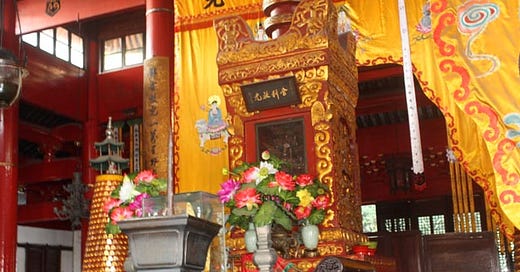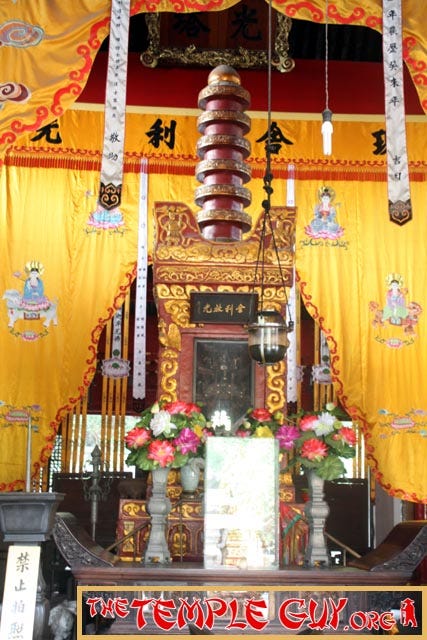Let's continue our day trip in the eastern outskirts of Ningbo. In the morning, we had visited Tiantong Temple, the origin of Japan's Soto Zen sect. Now we were on our way to Ayuwang Temple, said to possess an authentic relic of the Buddha--a piece of his skull! For reals? Come along and find out in this episode of--
TEMPLE TALES!
At the end of Episode 082 I mentioned that we (the people I was staying with, the driver, and myself) stopped for "lunch in a country diner." Let me just say: you'd think that a diner on the road between two major temples would make some effort to cater to Buddhists, maybe offering that amazing mock-meat cuisine for which some restaurants are famous. Nah. When a vegetarian is traveling in off-the-beaten-track China, usually the best he can get is broccoli with garlic, oily julienned potatoes, an unadorned block of steamed tofu, and rarely--rarely--veg dumplings (which are almost always suspect). No dumplings that day, so I was running on empty. Salad? Don't make me laugh! A cheese sandwich? You're killing me!
Anyway...
The Search for the Bones of the Buddha
This reliquary is said to contain a skull bone of the historic Buddha.
Ayuwang Temple is located near the Ningbo-Beilun highway. It's named for King (wang) Ashoka (ayu), the great unifier of India, who lived from around 304 to 232 BCE. One of Ashoka's well-known acts regarded the relics of the Buddha's body. The story, in brief, is this: At the death of the Buddha, eight kings were prepared to duke it out in the "War of the Relics" to gain control of his remains. Drona, the disciple in charge of those remains, wisely decided to divide them up eight ways. Eight stupas (burial mounds) were built, and the matter was settled.





